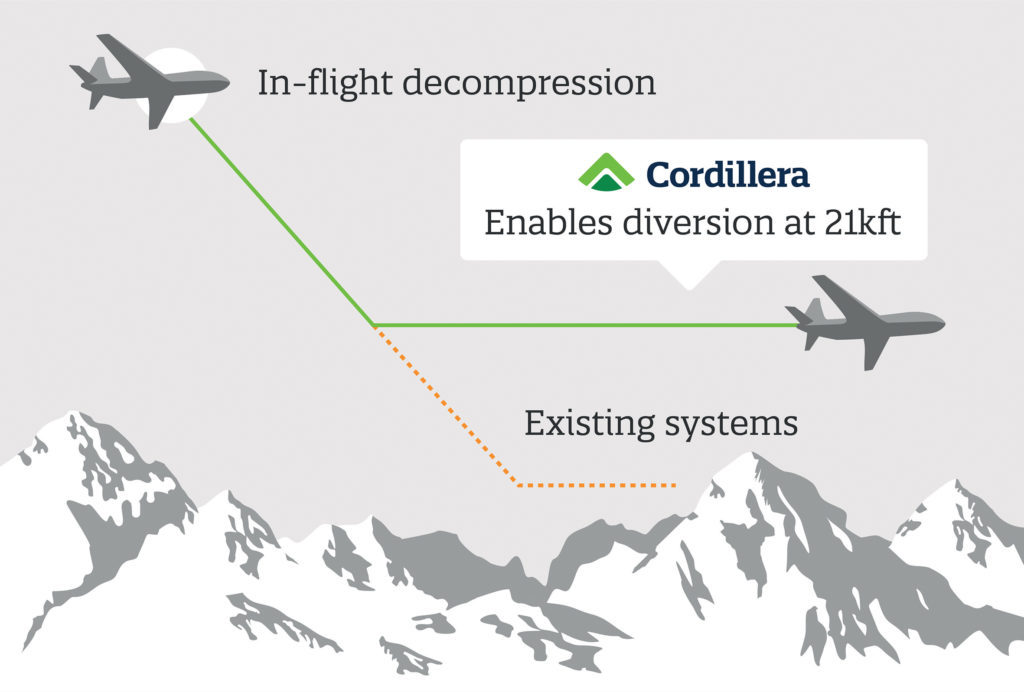Opinion: Flying Most Direct Route is Key to Airline Sustainability
Share

Tim Wakeford became CEO at breathing technology startup Caeli Nova in 2018 and has since overseen the successful public launch of the company. Prior to joining Caeli Nova, he spent three years at Boston Consulting Group as a project leader and consultant. He also held supply chain positions at Rolls-Royce, which saw him spending time in the UK, Germany and China while working with aerospace suppliers around the world.
“When people consider sustainable air travel, carbon offset programs and sustainable aviation fuels likely come to mind. While these are certainly valuable elements of an airline’s sustainability strategy, flight path optimization presents another major opportunity for carriers to lower their environmental footprint and increase operational efficiency.”
Tim Wakeford, Caeli Nova
Caeli Nova launched Cordillera, its passenger emergency oxygen system in March 2021. How did the idea come about, and how does an oxygen system affect flight path optimization?
While on a trip from Hong Kong to Europe in 2010, our founders realized the aircraft was not taking the most direct route. They discussed the flight path with the pilot, who was a former colleague, and discovered the limiting factor in the route selection was the aircraft’s oxygen system. Existing systems typically protect passengers for only 22 minutes. In the event of decompression, pilots are required to make a steep descent to a safe breathing altitude of around 10,000 feet within this timeframe. As a result, operators have had to avoid high terrain routes, where a descent to 10,000 ft within 22 minutes is not possible.
Having had their interest was sparked, Caeli Nova’s founders carried out extensive research into improving passenger oxygen levels at altitude. They drew upon established medical learnings to create a solution that would open up the most efficient flight paths, while keeping passengers safe. The result was the development of Caeli Nova’s patented breathing technology, which is implemented in Cordillera, a reinvention of the emergency passenger oxygen system.
Cordillera will enable the safe navigation of the most challenging high-terrain airways, such as L888 in the Himalayas. Opening up more direct routes over high-terrain regions allows airlines to operate shorter flights, resulting in reduced fuel consumption and lower emissions.
You mention L888 over the Himalayas – how would Cordillera enable aircraft to fly on that route? And how many commercial air services are there that could benefit from using Cordillera so that they can fly between destinations more directly?
Caeli Nova’s technology can keep the passengers safely oxygenated at 21,000ft for a prolonged period. If a rare decompression event occurred over the Himalayas at the furthest point from a safe diversion to 10,000ft, passengers would be required to be on supplemental emergency oxygen for around 100 minutes. Cordillera is designed to meet that requirement and have further contingency.
Regarding how many flights could benefit from our technology, our 2019 flight schedule data shows that during times of normal air travel, around 48,000 flights each year operate route W191, a longer flight path to the north of the Himalayas where the terrain is lower. There are several other mountainous regions that we are also investigating with airline operators, such as the Andes and the Rocky Mountains.

Do you give an idea of how much time airlines will be able to shave off flights when using Cordillera, and how much fuel they might be able to save?
The routes which benefit from the technology will have a 30-minute shorter sector time. Cordillera is also lighter than existing emergency oxygen systems, delivering additional weight-saving benefits. As such, we estimate that Cordillera has the potential to save the airline industry $360 million annually.
What’s involved with installing Cordillera? How do you suggest that airlines communicate vital information about the product to their passengers?
Cordillera is installed into the aircraft cabin in a similar way to existing systems and operates in the same way. In the event of a cabin decompression, Cordillera will automatically trigger the release of oxygen masks from the overhead panels, which passengers will wear for the duration of the diversion to a safe altitude.
The product can be easily retrofitted onboard in-service commercial or military passenger fleets with minimal downtime. We have collaboration agreements in place with several international airlines and will shortly conclude a Memorandum of Understanding with a potential launch customer that has already completed a full benefit verification analysis on Cordillera. The first installations have been scheduled for the end of 2021.
What is next for Caeli Nova?
We received initial Design Organisation approval from EASA for Cordillera in December 2020 following an intensive eight-month process. Throughout this period, we also worked closely with the regulator to undertake research and development of our technology. With design authority in place, we are now able to continue the development and installation of the product under an in-house supplementary type certificate.
Our next step is to demonstrate to more operators how Cordillera can be a key element in their sustainability strategy, whilst reducing operational costs. We’re also looking at applying our patented breathing technology beyond the aerospace industry to a broader range of sectors.


